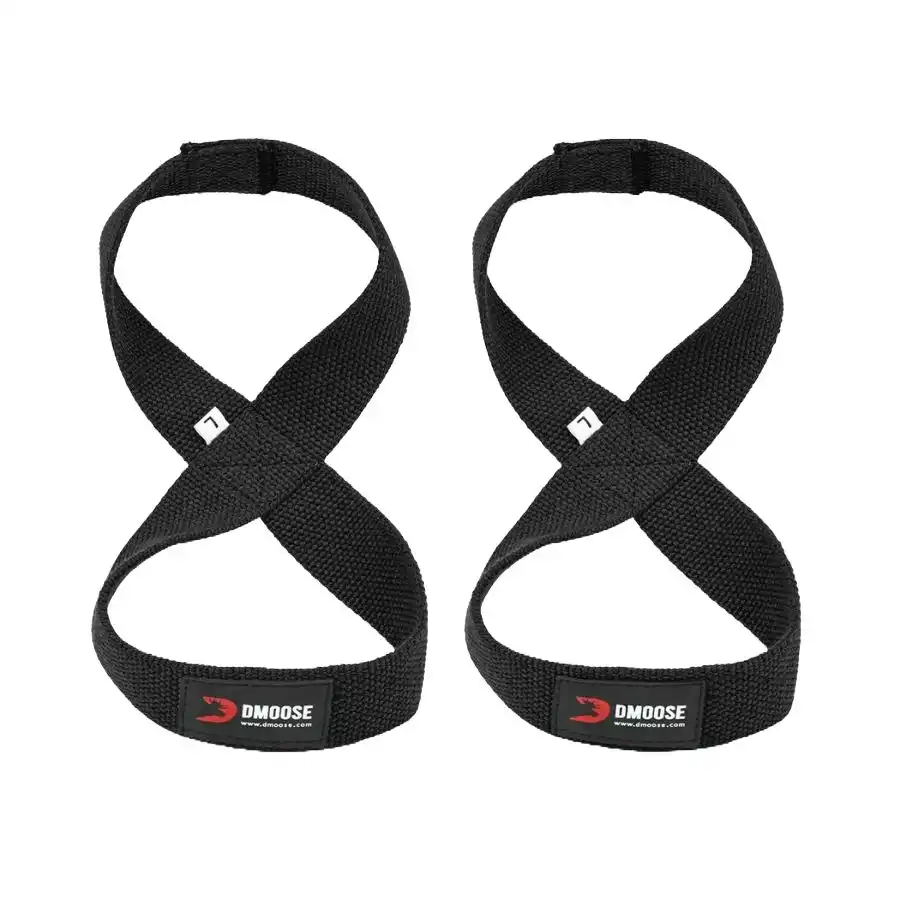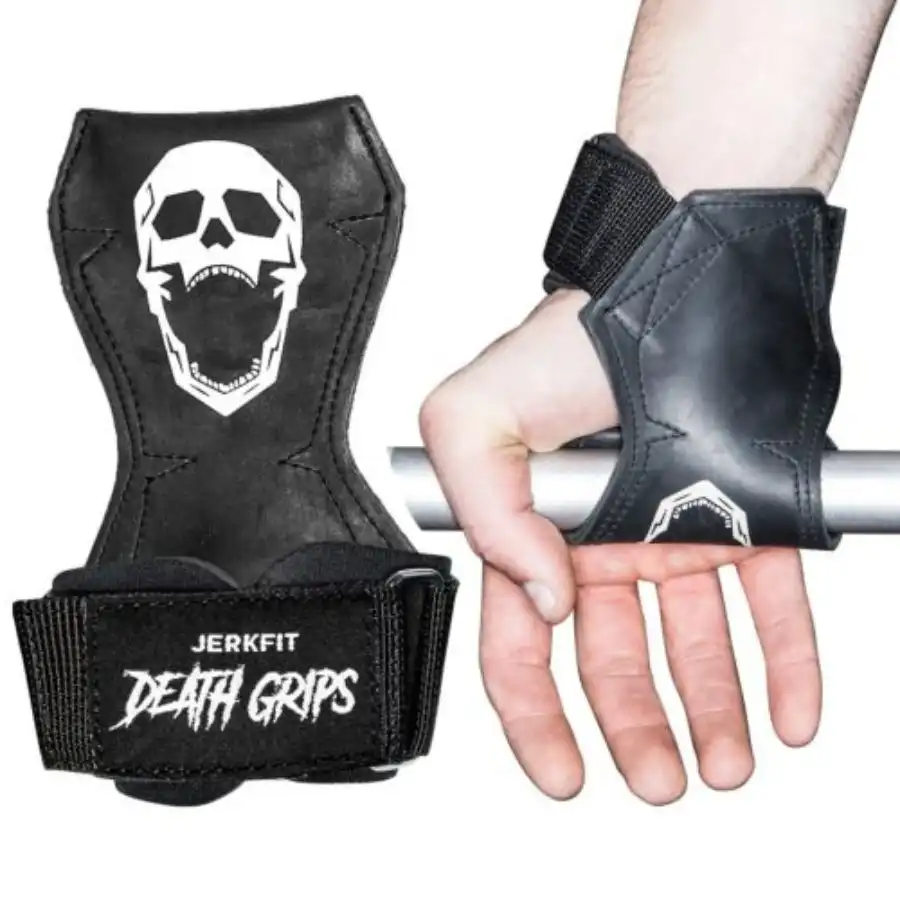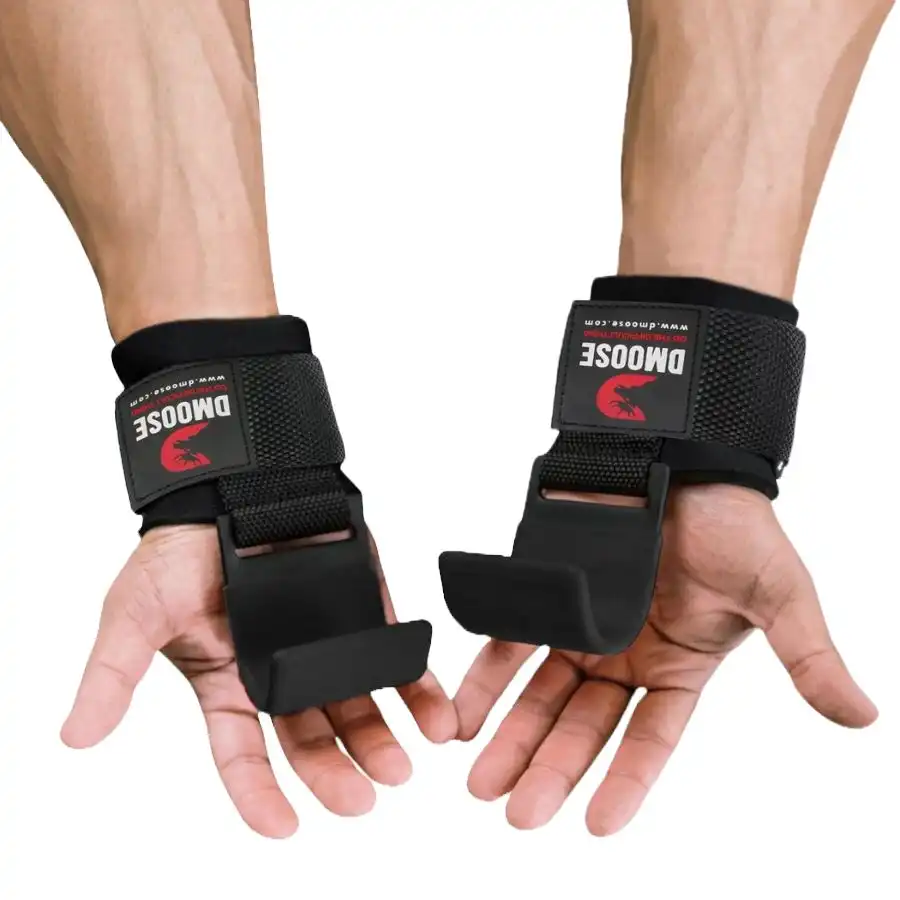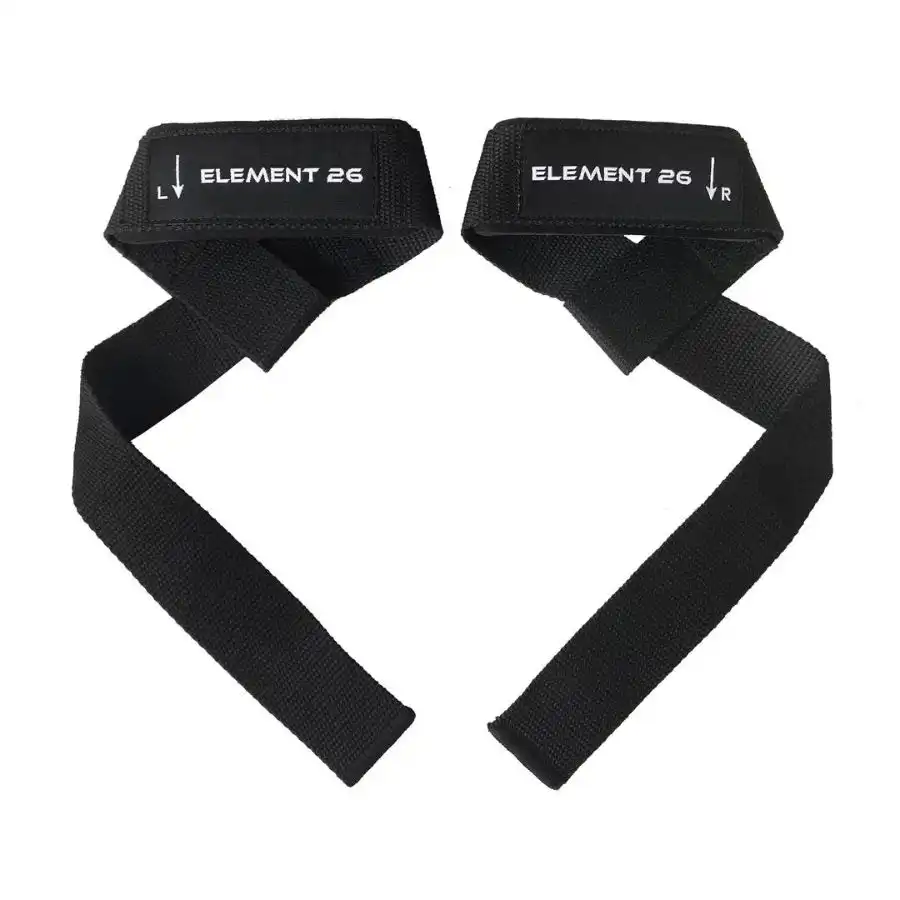
From protecting your hands to lifting heavier weights, the solution to finding the best lifting straps is to just randomly pick a pair and get back to your workout, right?
Straps are way more complicated than they appear. From weight capacity to color and material, each of the five different styles has its own best use cases. We’re here to help you decide which ones will suit you best.
The Breaking Muscle team features a roster of powerlifters, Olympic weightlifters, CrossFitters, strength and conditioning coaches, and certified personal trainers. Across the board, we’ve tested over a dozen lifting straps from various brands and evaluated their durability, grippiness, and how connected we felt to the bar when lifting. Down below, you’ll find our top choices to help you figure out which straps are the best fit for you and your training style.

The Iron Bull Strength Unleash Lifting Straps are our top pick overall. They’re made from high-quality nylon, a durable and resilient material that doesn’t stretch or tear easily. This means they can withstand heavy loads and intense workouts. And unlike cotton or leather straps, nylon straps don’t tend to fray or rot over time. These straps will last you for years of lifting without losing their shape or strength.
Thanks to their traditional “lasso” design, you can tighten or loosen them as you wish, depending on the thickness of your wrists and the diameter of the bar. This ensures a secure and comfortable grip on the bar, preventing any slippage or movement.
The Unleash Lifting Straps have soft and thick neoprene padding that cushions your wrists and prevents any abrasion or irritation. Neoprene is a synthetic rubber, the same material in almost all the best knee sleeves, that is flexible and supportive. It provides a smooth and soft surface for your wrists, reducing some of the pressure while distributing the weight more evenly.
Unfortunately, the Unleash straps are less comfortable than cotton straps, especially in hot and humid conditions. They’re made from nylon, a synthetic material that doesn’t breathe well, which traps heat and moisture. They also have poor absorption, which can cause a layer of sweat to build up on your wrists and affect the placement of your straps and comfort. Sweat can cause bacteria and odor to build up on your straps, which can be unpleasant and unhygienic. You’ll need to wash your nylon straps regularly to keep them clean and fresh.
These straps are traditional (lasso) lifting straps, so you loop them around your wrists and then wrap them around the bar several times to create a tight and secure connection. However, this process requires some skill and practice. At first, it will be awkward and time-consuming, but after a while, you should get the hang of it.

The main advantage of Figure 8 straps is that they’re easy to use. Simply loop one end around your wrist, bring your hand close to the bar, and feed your hand through the other loop. Bring your hands inwards to grab the bar for the straps to become tight, creating a secure grip that won’t slip or loosen during lifts. To remove them, just reverse the process and slide them off your wrists — no need to fumble with long straps again!
The DMOOSE Figure 8 Lifting Straps are made of high-quality cotton that’s soft and durable. Cotton is breathable and doesn’t irritate your skin or cause excessive sweating, so you’ll have a better grip whether you’re lifting a barbell, kettlebell, or axle bar.
They’re also machine-washable, so you can keep them clean and fresh. The DMOOSE Figure 8 Lifting Straps offer three sizes (small, medium, or large) to suit your wrist and hand size. The size chart on their website is clear and will help you find the right fit.
The DMOOSE Figure 8 Lifting Straps don’t have any padding or cushioning for your wrists. This means they might dig into your skin and cause discomfort or bruising, especially if you lift heavy weights or use them for high-rep sets. I’ve even seen some elite-level lifters end up with small skin tears because they’re deadlifting massive weights. If you have sensitive wrists or prefer more comfort, you may want to look for straps with wrist padding, like the Element 26’s.
Remember how they’re easy to use? Well, that’s after you learn how to use them. Most beginners find figure 8 straps awkward to use at first due to incorrect use. Even when used properly, they can still feel unnatural as the load is held outside your hands instead of in line with them. As a result, you may need some time to get used to them, especially if you’re accustomed to traditional straps.
Finally, figure 8 straps aren’t a one-size-fits-all. They require the correct size to function correctly, so you won’t get the optimal grip and support from the straps if you choose a size that is too big or too small. Make sure to measure your wrist and hand size carefully and follow the size chart on their website before buying.

Our Breaking Muscle product tester found the Jerkfit Death Grips fast and easy to use. Unlike other straps that require you to wrap them around the bar multiple times, the Death Grips attach to your wrist with a velcro strap, and then you wrap the rubber flap around the bar — trapping the bar between the grips and your palms. When used on deadlifts, they avoid the hassle of fiddling with a longer strap during your setup. They also save time, especially when used for deadlifts in timed workouts like those seen in CrossFit.
When they tried them in a workout, our team member was impressed by the grip. They felt connected to the bar during their deadlifts and pulled heavy weights that they would have felt slipping without them. When used on pull-ups and dumbbell exercises, they found the grips held up well without slipping. This is due to their unique PVC rubber construction and neoprene padding. During the entire test, their comfort surprised our product tester, and they loved how intuitive they were to use.
One of the drawbacks of the Jerkfit Death Grips is that they can take some time to get used to, especially if you’re not familiar with using lifting straps. The Death Grips are a little bulky because of the neoprene pad, so they can initially feel awkward. Compared to traditional lifting straps, the pad size is larger with more stitching, resulting in a higher risk of loose threads than other straps. You may need to trim or burn off any loose threads that you notice on your straps to prevent them from getting worse.
The other downside of the Jerkfit Death Grips is the cost. At the time of writing, the Death Grips cost $39.95 per pair. This price is more than double that of other quality straps in this article, like the DMOOSE budget-friendly straps. While the Death Grips offer a lot of value and quality for their price, they may not be affordable or worth it for everyone.

Unlike other lifting straps that require you to wrap them around the bar multiple times, these hooks are nearly effortless to apply. Put them on your wrists, tighten the velcro strap, hook them onto the bar, and voilà!
Straps this easy to use saves you time and avoids the hassle of resetting your straps, especially when switching between different exercises or weights. For ease and speed, I find hooks are better than any other strap type while not interfering much with your grip or wrist mobility.
These hooks are versatile and can be used for various types of implements. They’re suitable for barbell lifts such as deadlifts, shrugs, or rows, as well as using them on pull-up bars. They play nice with cable machine attachments, and one customer even mentioned they use them on their rowing machine handles to combat grip fatigue.
I’m pleasantly surprised by their construction. The actual hooks of the Weightlifting Hooks are made from reinforced stainless steel with a non-slip rubberized coating. This means they should have no problem handling weights up to the listed capacity.
They’re 3.3 inches wide and have a deep curve that ensures a stable and secure grip on the bar. Unlike narrow or shallow hooks, the DMOOSEs will prevent the bar from tipping or slipping out of your hands, which could cause injuries or, at the very least, compromise your form.
These hooks have a maximum weight capacity of 600 pounds, which might be a limitation for some advanced lifters who want to lift heavier weights. If you exceed this limit, you risk damaging the hooks or injuring yourself — consider the best lifting straps for powerlifting from Iron Bull Strength instead.
The Weightlifting Hooks might cause your wrists to sweat more than usual, especially in hot or humid conditions. The thick neoprene padding is extra-wide to cover your wrist area and the lower part of your palm, but this results in a large non-breathable area of skin. Further, the velcro strap must be cinched extra tight to avoid getting pulled off from heavy weights resting in the hooks. While it’s unlikely that either of these will cause a structural issue with the hooks, the excessive sweat can make them uncomfortable or unhygienic unless you wash them often.
Unfortunately, the hooks are fixed in place and don’t have any adjustment options. This means that they might only fit average hand sizes correctly. For those with extra small or large hands, the hooks might be too close to your fingertips or wrists, respectively. In turn, this can negatively affect your grip strength or comfort level.

The defining feature of the Element 26 Weightlifting Straps is the traditional lasso style, meaning they have a closed loop at one end where the free end feeds into them. This strap style is great for small wrists because it allows you to adjust the size until the strap matches your preference. You can also easily switch between different exercises without re-adjusting them. Overall, lasso-style straps are more secure and stable than other straps, such as Olympic lifting or hooks.
Another pro of the Element 26 Weightlifting Straps is that they’re 23 inches long. This length is ideal for lifting straps for a couple of reasons. First, it makes it easier to wrap the straps with a single hand, especially your non-dominant side. Second, the 23-inch length is compatible with a wider range of barbells; axle bars have a noticeably larger diameter than Olympic barbells, so the longer material gives you get more wraps around the bar for a more secure grip — this is helpful for those with smaller wrists and hands that would otherwise struggle with thicker bars.
The Element 26 Weightlifting Straps have comfortable neoprene padding inside the loop around your wrist. Neoprene is a soft and flexible material that provides cushioning and support for your wrist, reducing the pressure that can cause discomfort and pain to your wrists during heavy lifting.
One of the cons of the Element 26 Weightlifting Straps is that they have left and right indicators on the loop around your wrist. These indicators are supposed to help you put on the straps correctly, but they’re actually redundant and unnecessary. Lasso-style straps have a closed loop on one end, and whether the free end is fed through the left or right side determines which hand they belong on. Since there is no difference between the left and right straps, except for the indicator, this feature is basically just a gimmick that adds little value to the straps.
Another con of the Element 26 Weightlifting Straps is that they are made of cotton, which is weaker than nylon. Nylon is a synthetic material with higher tensile strength and durability than cotton, so it can withstand more weight and stress without breaking or tearing. Cotton straps, on the other hand, can fray or snap after prolonged use or exposure to moisture. Cotton straps are also more prone to shrinking or stretching after washing or drying, affecting their fit and performance.
Finally, the Element 26s only come in black. Black is the standard color for lifting straps, but it can also be dull. Some lifters may prefer colorful or vibrant options to match their personality or style. Black straps can also be more challenging to identify in a crowded gym or locker room because they all look similar. More color choices would make the product more appealing and attractive to a broader range of customers.